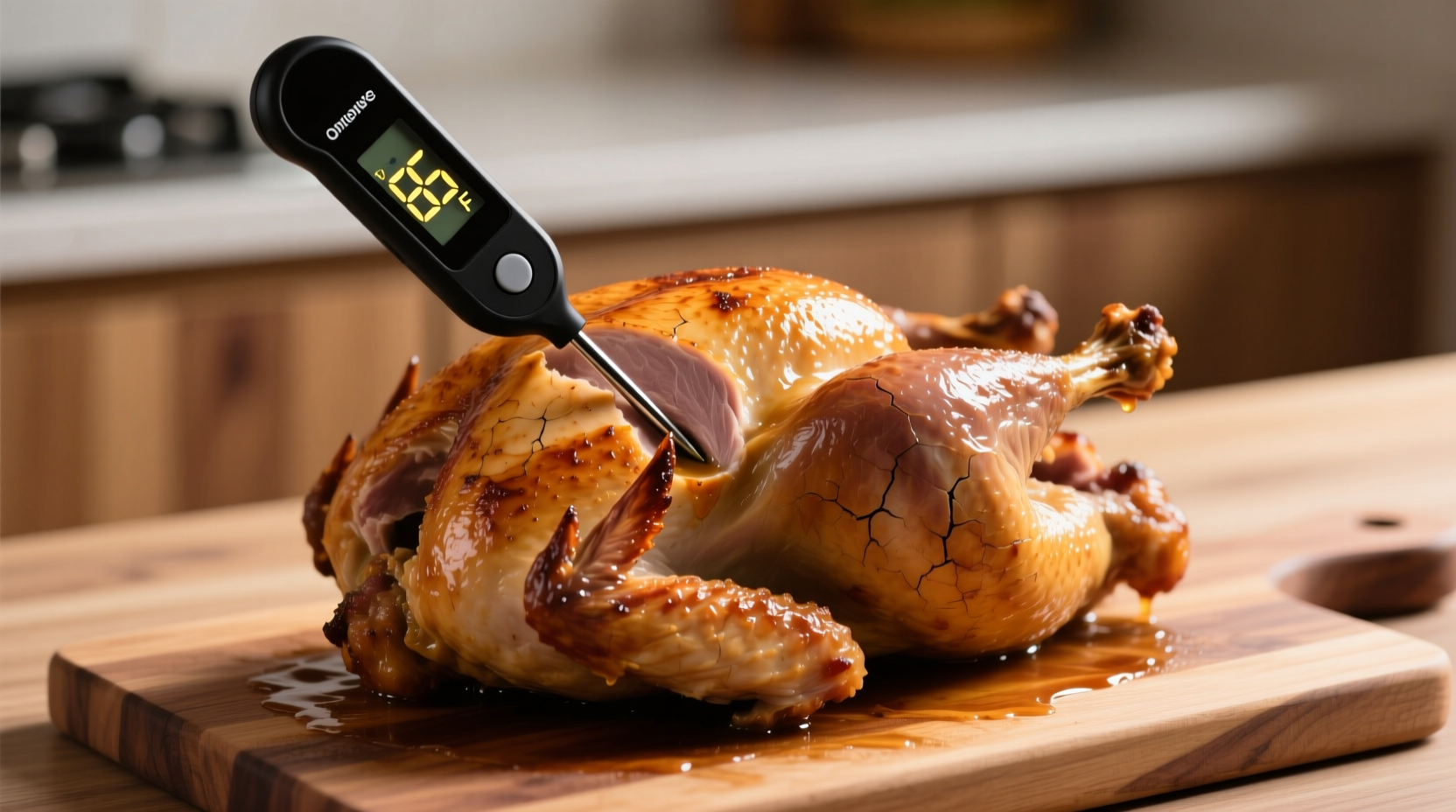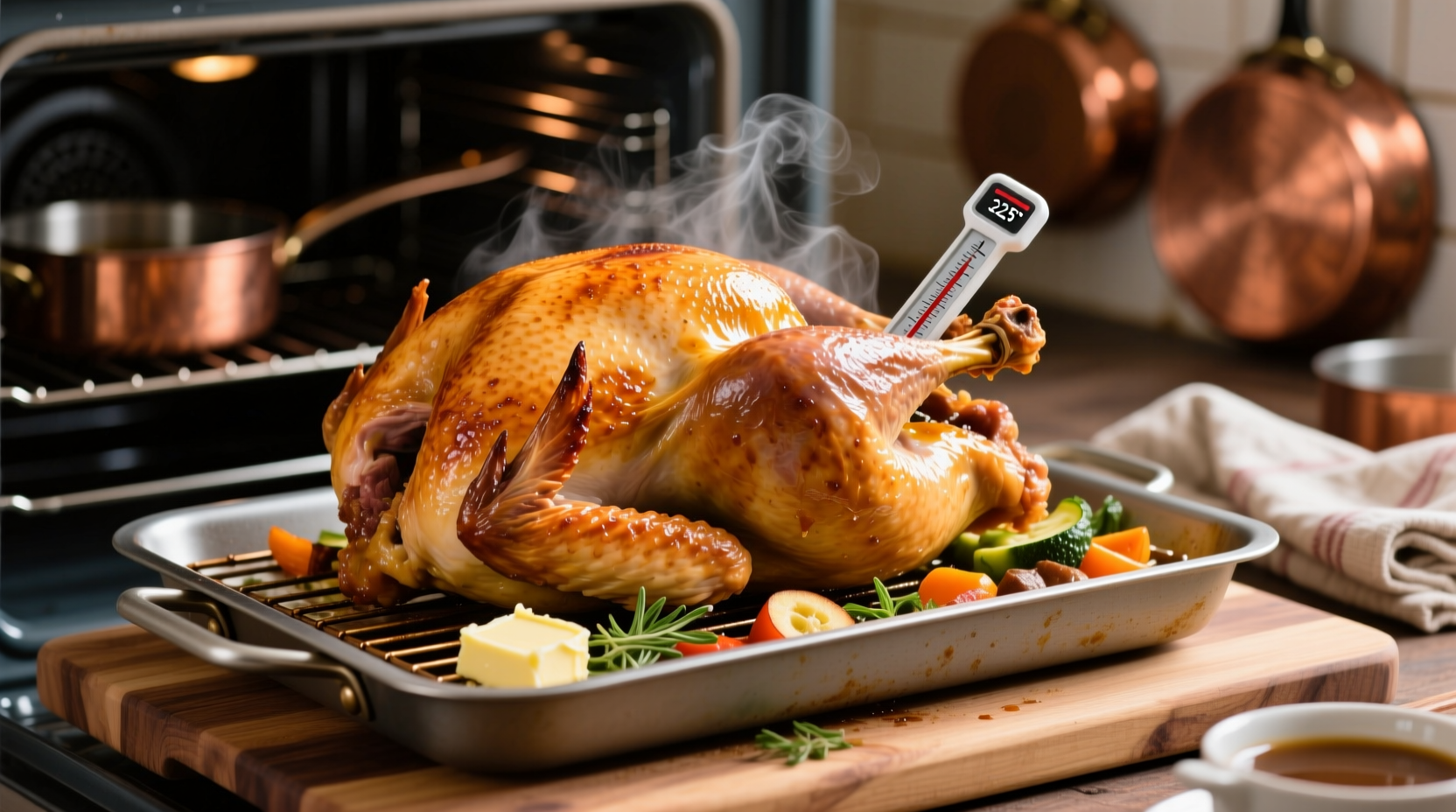The safe internal temperature for a fully cooked turkey is 165°F (74°C) measured in the thickest part of the breast and thigh. Roast your turkey at a consistent oven temperature of 325°F (163°C) for optimal results. Never rely on cooking time alone—always verify doneness with a reliable meat thermometer.
Nothing ruins a holiday gathering faster than undercooked turkey or dry, overcooked bird. Getting the temperature right isn't just about perfect texture—it's critical food safety. As a professional chef with years of experience teaching home cooks proper poultry techniques, I've seen how confusing turkey temperature guidelines can be. This guide cuts through the confusion with science-backed methods that guarantee juicy, safe turkey every time.
Why Temperature Matters More Than Cooking Time
Many home cooks still rely on outdated "15 minutes per pound" rules, but turkey size, shape, oven accuracy, and starting temperature all affect cooking time. The USDA's Food Safety and Inspection Service confirms that 165°F (74°C) is the only reliable indicator of safe poultry. At this temperature, harmful bacteria like salmonella are completely eliminated.
| Temperature Zone | Effect on Turkey | Food Safety Status |
|---|---|---|
| Below 140°F (60°C) | Bacteria multiply rapidly | Unsafe |
| 140-150°F (60-66°C) | Meat begins to firm, pink color remains | Unsafe |
| 150-160°F (66-71°C) | Pinkness decreases, juices run slightly pink | Unsafe |
| 165°F (74°C) | No pinkness, juices run clear | Safe |
Your Step-by-Step Turkey Temperature Guide
Preparation Phase: Setting Up for Success
Before your turkey even enters the oven, proper preparation affects final temperature:
- Thaw completely—a frozen center creates dangerous cold spots (refrigerator thawing takes 24 hours per 4-5 pounds)
- Bring to room temperature—let turkey sit out 1-2 hours before roasting for even cooking
- Insert thermometer properly—place probe in thickest breast meat without touching bone

Cooking Phase: Oven Temperature Strategy
The National Turkey Federation and USDA both recommend maintaining a steady oven temperature of 325°F (163°C). Higher temperatures (above 350°F) cause exterior overcooking before interior reaches safe temperature, while lower temperatures prolong the dangerous bacteria growth zone.
Professional chefs often use a two-stage approach:
- Initial high heat (425°F for 30-45 minutes) creates beautiful browning
- Reduce to 325°F until internal temperature reaches 160°F
Checking Phase: Avoiding Common Thermometer Mistakes
Over 60% of home cooks check temperature incorrectly. Follow these professional techniques:
- Test multiple locations—breast, thigh, and wing joint
- Wait 15 seconds after inserting probe for accurate reading
- Never trust pop-up timers—they trigger at 180-185°F, guaranteeing dry meat
- Remove turkey at 160°F—it will rise 5°F during resting (carryover cooking)
Resting Phase: The Critical Final Step
Resting isn't optional—it's essential for perfect texture. During the 20-30 minute rest period:
- Internal temperature climbs 5-10°F (reaching safe 165°F if removed at 160°F)
- Meat fibers relax, redistributing juices throughout the bird
- Skin stays crisp while interior remains moist
Special Situations: When Standard Rules Don't Apply
Certain preparations require temperature adjustments:
Brined Turkeys
Brining lowers the temperature at which proteins coagulate. Remove brined turkeys at 155°F—they'll reach 165°F during resting without drying out. The USDA's Food Safety Education staff confirms this adjustment prevents the overly moist texture that can occur with standard brined poultry temperatures.
Stuffed Turkeys
If you stuff your turkey (not recommended for food safety), the stuffing must reach 165°F separately. The USDA Food Safety and Inspection Service warns that cavity stuffing creates uneven heating, potentially leaving dangerous bacteria in the center. For safety, cook stuffing separately and verify both turkey and stuffing reach 165°F.
Troubleshooting Temperature Problems
Problem: Turkey Browns Too Quickly
Solution: Tent with foil when golden brown, but continue monitoring internal temperature. Lower oven to 300°F if browning excessively before reaching 150°F internally.
Problem: Turkey Isn't Reaching Temperature
Solution: Verify oven temperature with independent thermometer. Many home ovens run 25-50°F cooler than displayed. If turkey stalls at 145-150°F (the "danger zone plateau"), increase oven to 350°F temporarily to push through.
Problem: Uneven Cooking
Solution: Rotate pan 180 degrees halfway through cooking. For significant unevenness, shield cooler areas with foil while exposing slower-cooking sections.
Essential Tools for Perfect Turkey Temperature
Invest in these temperature-critical tools:
- Digital instant-read thermometer—reads in 3-5 seconds (Thermapen recommended)
- Leave-in probe thermometer—monitors temperature without opening oven
- Oven thermometer—verifies your oven's actual temperature
According to America's Test Kitchen testing, inexpensive dial thermometers can be inaccurate by 15-20°F—enough to ruin your turkey. Their 2023 equipment review confirms that digital thermometers under $30 provide restaurant-grade accuracy.
Final Temperature Checklist
Before carving, verify these temperature checkpoints:
- Turkey removed from oven at 160°F internal temperature
- Resting time completed (minimum 20 minutes for small turkeys, 45 minutes for large)
- Final internal temperature reads 165°F or higher in multiple locations
- Juices run clear with no pink tinge











 浙公网安备
33010002000092号
浙公网安备
33010002000092号 浙B2-20120091-4
浙B2-20120091-4